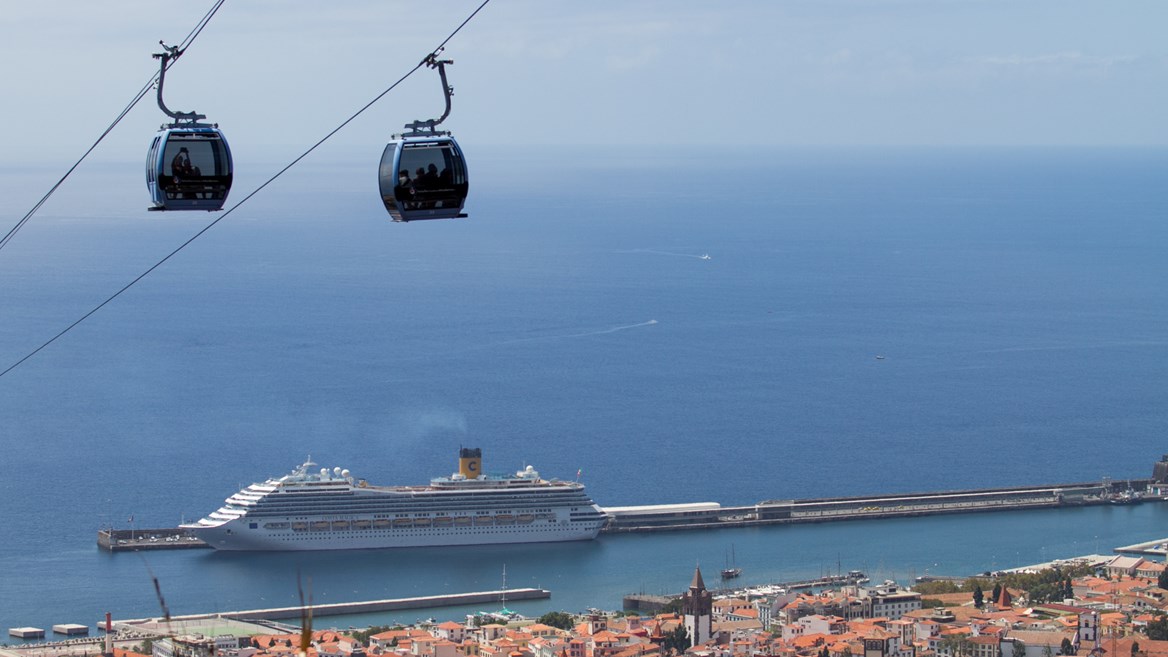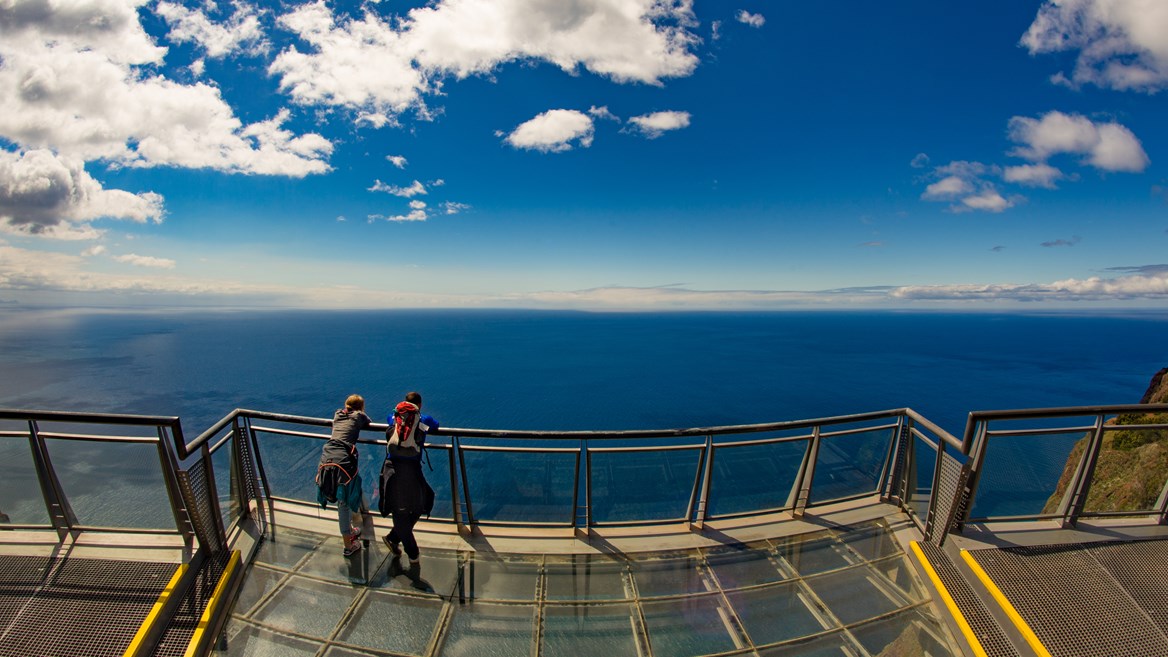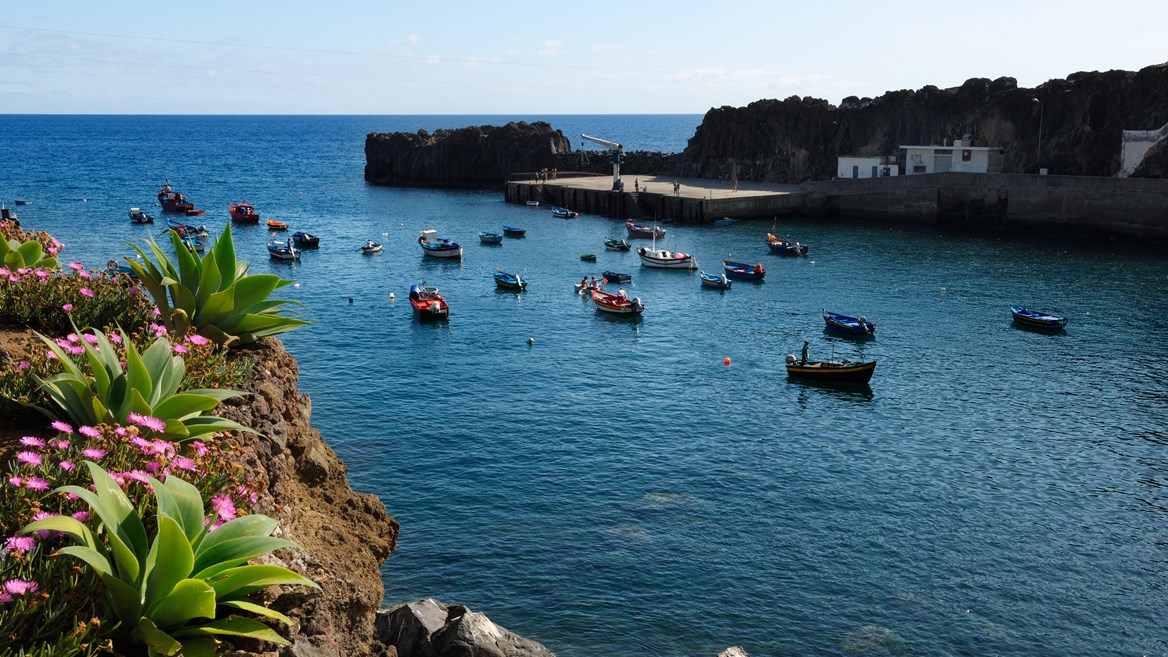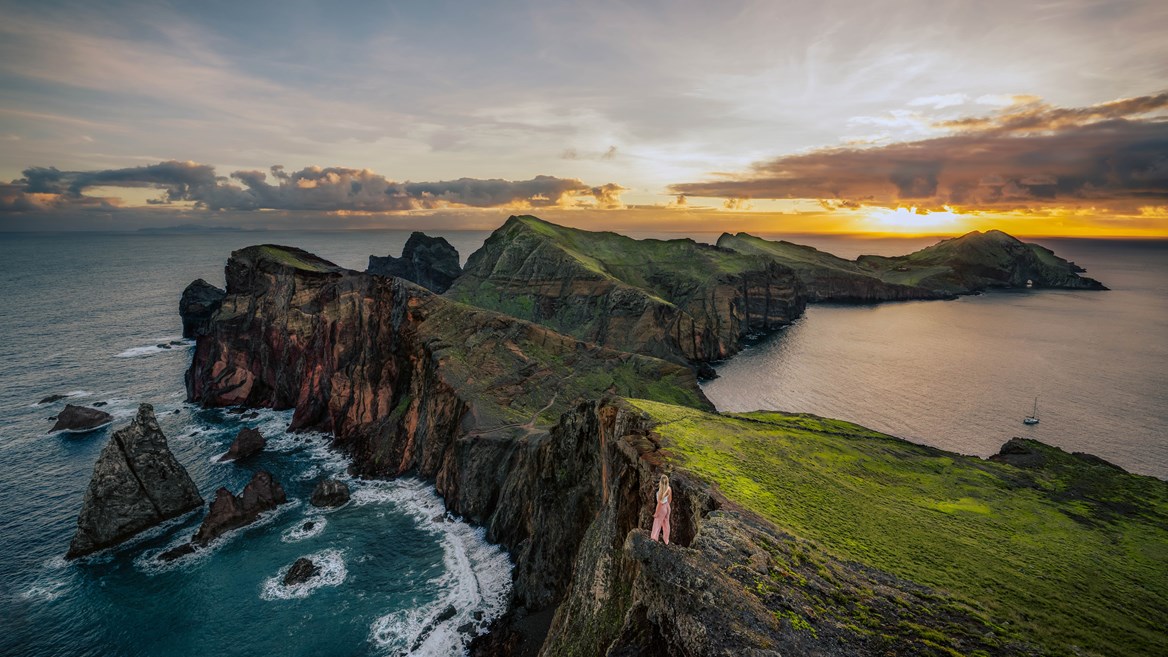Madeira: island of colours
Laurel forests, waterfalls, mountains, cliffs, volcanic landscapes and natural pools that are renowned across Europe, as well as charming coastal villages and legendary levadas (channels or aqueducts), are just some of Madeira’s best-kept secrets. In this gallery we start out in its capital, Funchal (which you can fly to for only 7,500 Avios each way), to show you around some of the most beautiful spots on Portugal’s loveliest island.

Madeira has seven cable cars – partly thanks to its landscape, which is dominated by cliffs and rugged mountains. The most well-known of them connects Funchal to the Monte neighbourhood and another continues on to the botanical gardens. The 560m high cableway (pictured) zips between Funchal and Monte in 15-20 minutes and offers unbeatable views over the whole city as it travels down the steep hillside towards Monte. Check for up-to-date information on visitor restrictions on this website / Image by Miguel Moniz

Madeira’s terraced botanical garden is on the outskirts of the capital, and is home to up to 2,000 exotic plants from all over the world. Now a scientific and cultural point of reference, thanks to its conservation programmes for endangered plants, at its highest point, the lookout offers the best views over Funchal’s port / Image by Francisco Correia

Two hundred years ago, the fruit and vegetables in the market in Funchal reached Monte in these wicker baskets – until 1850, when one was used to take a woman to hospital. Since then, they have been used to transport people, and tourists in particular. If you are lucky you might be able to find out more from the carreiros on the way down – they really know the tradition, after all – but with descents ranging from 2km to 40km an hour, the adrenaline might just be enough / Image by Andre Carvalho

Located in the old quarters of Funchal, the Mercado dos Lavradores farmers’ market is perfect for soaking up the Madeiran atmosphere. The swarms of tourists are deceptive; this is still the place where locals come to do their shopping. It opened in 1940 and contains everything and anything: flowers, fruit, meat, liquor, souvenirs… but is most famous for its fish counters, where it’s not unusual to find fishmongers cutting up 30kg tuna fish with a cleaver. Visit early in the morning; it opens at 8am Monday to Thursday, 7am on Fridays and Saturdays and is closed on Sundays / Imagen by Jose Mendes

The 580m cliffs at Cape Girão, which are a ten-minute drive from the fishing village of Câmara de Lobos, are some of the tallest in the world. Just below lies one of the area’s more exclusive beaches, Fajã do Rancho, which can only be accessed by boat or the cable car at Rancho, around a ten-minute drive from the Cabo Girão lookout / Image by Digital Travel Couple

Suspended along the edge of the cliffs at Cape Girão is a glass platform allowing you to walk out 600m above the sea. You can take in the whole of the southeastern coast of Madeira from this viewpoint (pictured). It’s become a popular place to visit in Madeira, so either come first thing in the morning or last thing in the evening to beat the crowds / Image by Jose Mendes

The small fishing town of Câmara de Lobos, to the west of the island, was named after the colony of monk seals (lobos marinhos in Portuguese) that lived there at the time. Sightings of these seals do still occur, but are very far and few between. Now Câmara de Lobos is better known for its picturesque fisherman’s cottages and famous bay full of colourful boats, as well as its nightlife, restaurants and, of course, poncha, a traditional punch drink made from a mixture of sugar cane brandy, water and lemon juice / Image by Hugo Reis

The north of Madeira is the most untouched part of the island. Uniquely home to the majority of the island’s laurel forests – declared a Unesco World Heritage Site in 1999 – this is the place to revel in the volcanic landscape so typical of the island. You’ll discover never-ending cliffs, interesting walking routes and unusual municipalities, such as Santana. Some roads like the one that follows the coast from Porto da Cruz to Porto Moniz offer up stunning scenery, as you can see in the photo / Imagen by Digital Travel Couple

Although it may be some distance from Funchal, Porto Moniz – one of the oldest towns on the island – is only a 50-minute drive away. It’s worth a visit to see its architecture, including the 17th-century church and São João Baptista Fortress, now home to Madeira’s aquarium. However, Porto Moniz’s most famous attraction has been designed by nature, with the eruptions of lava and subsequent erosions creating natural pools. The sea rushes in, fills them with crystal-clear water, and retreats / Image by Francisco Correia

This small peninsula at the easternmost point of the island is known as Ponta de São Lourenço. Tinged with ochres and yellows, the landscape stands in stark contrast to the verdant hues of the rest of Madeira. The headland, jutting out high from the sea, has been a protected area since 1996 due to the rarity of its flora and fauna and offers some unique views of Porto Santo island, 40km away. There’s a small beach there, Prainha, which is also stunning / Image by Digital Travel Couple
Madeira has seven cable cars – partly thanks to its landscape, which is dominated by cliffs and rugged mountains. The most well-known of them connects Funchal to the Monte neighbourhood and another continues on to the botanical gardens. The 560m high cableway (pictured) zips between Funchal and Monte in 15-20 minutes and offers unbeatable views over the whole city as it travels down the steep hillside towards Monte. Check for up-to-date information on visitor restrictions on this website / Image by Miguel Moniz











